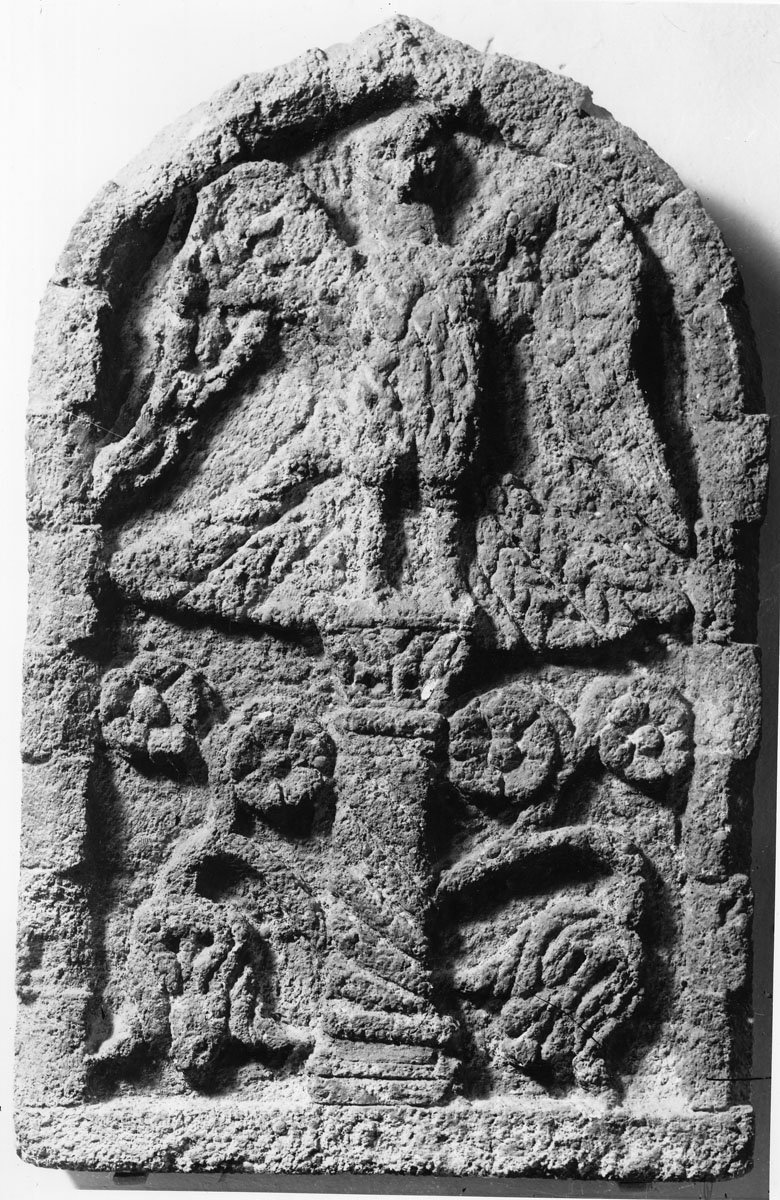
Relief with decorative carving
Sculptures
| Artist | |
|---|---|
| Date | 1630–1640 |
| Object type | sculpture |
| Medium, technique | bronze |
| Dimensions | 39.5 × 15 × 15 cm, 2 kg |
| Inventory number | 5360 |
| Collection | Sculptures |
| On view | Museum of Fine Arts, Second Floor, European Sculpture 1350-1800, Gallery 2 |
The mythological story of Psyche, who was granted immortality after many trials and is taken by Mercury, the messenger of the gods, to Olympus in order that she may marry her beloved, Cupid, was popular among the Mannerist sculptors. Adriaen de Vries, a talented pupil of Giambologna, made the most famous large bronze of Mercury and Psyche in 1593 for the Prague court of the Habsburg Emperor Rudolph II. Other bronzes on the same subject are known from the circle of Hubert Gerhard, a Dutch artist who also studied in Italy. Caspar Gras, a German-born Austrian sculptor, was a member of Gerhard’s workshop, and followed his master as Court Embosser at the Innsbruck residence of the Habsburg archdukes. Although he never travelled to Italy, he was markedly influenced by Giambologna at second hand thanks to his apprenticeship with Gerhard. Moreover, he was able to study his renowned Florentine predecessor’s small bronzes in the ducal collection.
The Budapest Mercury and Psyche is an inventive derivation both of Giambologna’s Mercury in Flight and the female figure from his Rape of a Sabine. The two entwined, seemingly weightless figures are characteristic of the idiom of Mannerist artists, and the sculptor was clearly untroubled at producing the scene in bronze, a medium that is hardly associated with airiness. The casting of the Budapest group is uncommon: the two figures were cast separately and only soldered together after finishing the work on the surfaces. The same technique was used for the variant of this work in the Kunsthistorisches Museum in Vienna, and the method characterises other small bronzes by Gras, reflecting a casting technique strikingly different to contemporary Italian practice.
Text: © Miriam Szőcs
Petrovics, Elek – Meller, Simon, Ferenczy István bronzgyűjteményének kiállítása, Országos Magyar Szépművészeti Múzeum, Budapest, 1917, p. 14.
Balogh, Jolán, Katalog der ausländischen Bildwerke des Museums der bildenden Künste in Budapest, IV – XVIII. Jahrhundert: 1. Textband Bd. 1, Akadémiai Kiadó, Budapest, 1975, p. 206., no. 291.
Szmodisné Eszláry, Éva, A Régi Szoborgyűjtemény kincsei, Szépművészeti Múzeum, Budapest, 1994, p. 67.
Szmodisné Eszláry, Éva, The treasures of the Old Sculpture collection, Szépművészeti Múzeum, Budapest, 1994, p. 67.
This record is subject to revision due to ongoing research.